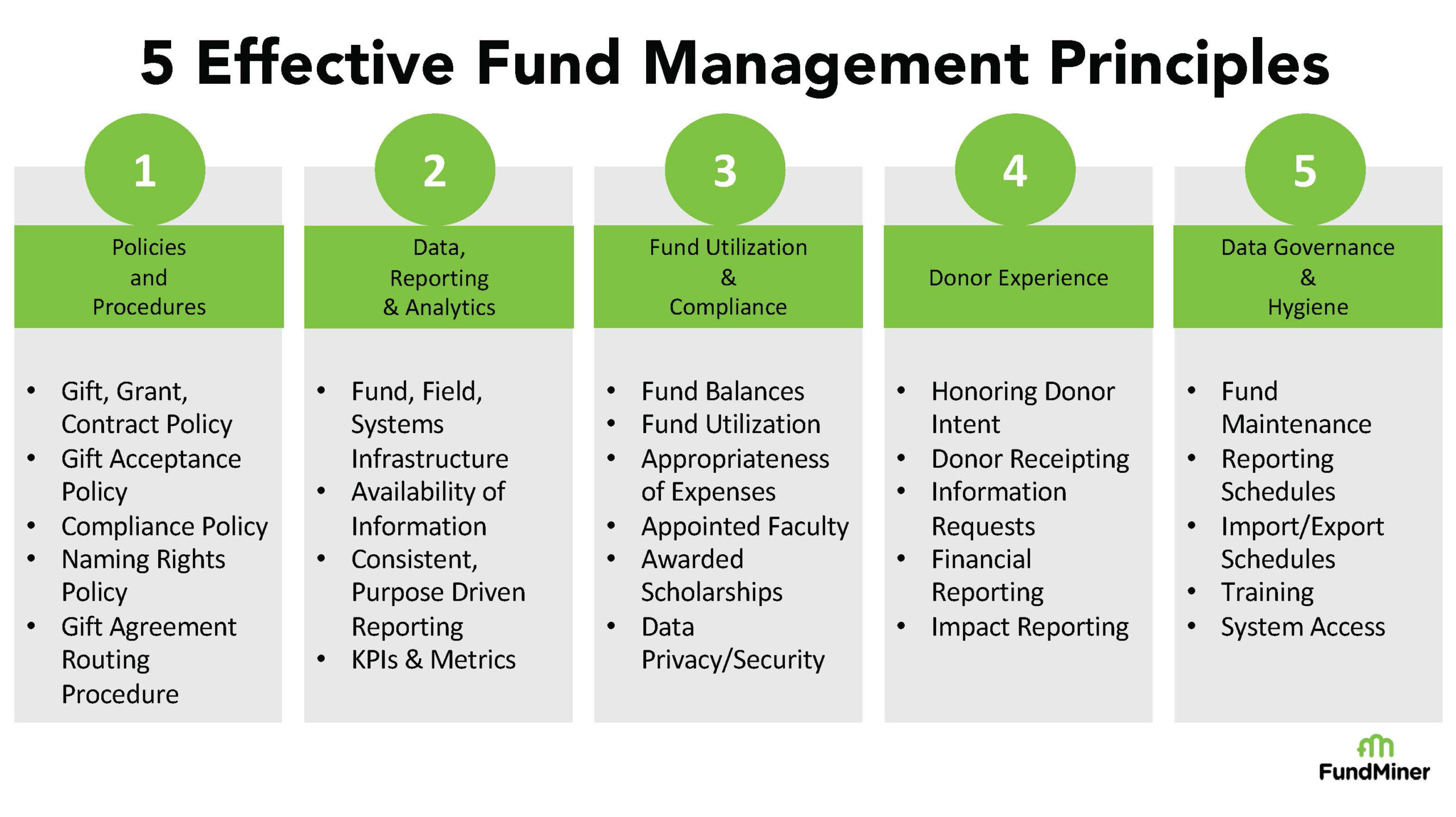Constructing and maintaining the donor pyramid takes more than identifying a wide base of support.
When we think of the overall advancement enterprise, we must consider the groundwork that underpins the entire operation. That groundwork is effective fund management.
With today’s challenging economic climate and donor trust crisis, successful advancement teams are built one operational block at a time. This means investing time and resources not only in relationship-building, but also in the essential tools and technology that enable successful and sustainable fundraising—effective fund management. Like the wrench that turns a gear, effective fund management enables both fundraisers to move prospects and donors through the fundraising cycle efficiently and advancement leadership to strategically grow their divisions. More so, it lays the foundation for those donors to return and reinvest.
There are five core foundational fund management principles that will make or break your advancement efforts and help you build a stronger donor pyramid. While these five building components may live across different teams, their strength emerges when they are evaluated and enhanced on their interconnectedness. Leaders and teams from all sides of the shop must own their direct (or indirect) influence on effectively managing donor funds.
We’ve explained the five principles below from the perspective of a builder. It takes a fair amount of building to first establish a focus on these principles, but once you have them in place, your team, partners, and donors will have better experiences.
1. Policies and Procedures: Your Blueprints to Follow
Just as architects lay out detailed plans for a building, your policies and procedures provide guidelines for consistency and transparency. They ensure that every action aligns with your institution’s values much like how a blueprint ensures each element of a structure comes together. Policies and procedures cannot be a set-it-and-forget-it component, however. Similar to how a foreman and architect regularly review the plans and the construction, your policies and procedures need to be reviewed regularly (and updated!) over time. For example, having a clear gift acceptance policy can prevent misunderstandings that preemptively protect the donor-institution relationship as well as the institution’s reputation and brand.
2. Data, Reporting & Analytics: Do the Groundwork First
Data is like the solid ground upon which you’ll build, and preparing that groundwork takes planning with the end in mind. Just as a well-prepared base supports the building’s foundation and framing, robust data, reliable reporting, and analytics allow you to make informed decisions, track progress, identify areas for improvement, and guide your strategies. It’s essential to have access to accurate and timely information, as well as the tools to analyze that information efficiently and effectively.
Beyond having data available, consider the structure and health of your data, the fields you currently track, and those you desire to track. Make a plan for improvements.
3. Fund Utilization & Compliance: Pour the Concrete Carefully
Like mixing the foundation’s concrete, you meticulously blend together fund utilization and compliance to get more transparent stewardship. Just as the concrete sets the stage for the entire building’s integrity, the prudent utilization of funds sets the stage for both the integrity of your entire advancement operation and your impact story. The usage of funds must align with donor intent, ensuring that gifts are used in the manner in which they were intended and that compliance with policies and regulations are met. Institutions are often subject to various regulations and donor restrictions, making compliance a top priority.
Raising the money for your project is only half the battle; your project is only complete when you effectively use those funds as intended.
4. Donor Experience: Add Your Reinforcing Steel
After the concrete is poured, a layer of reinforcing steel is laid to strengthen the foundation, enhance its load-bearing capacity, and prevent cracks or structural issues. Just as the placement of that steel enhances a foundation’s resilience, a positive donor experience fortifies your advancement efforts. On the flip side, a poor donor experience can be as damaging as rusty, misaligned steel in a building’s foundation or an undetected water leak—weakening the structure and leading to potentially divesting issues.
While often thought of as a donor relations or stewardship team’s responsibility, the donor experience is influenced by everyone in the division. Your fund managers must use funds to give your donor relations experts the stories they need to share in impact reports. A smooth gift-giving experience and personalized, timely reporting builds confidence in your organization, while a cumbersome or lengthy process can create a negative experience, thereby undermining trust and commitment.
Beware letting funds go unused or misusing them. To do so may mean kissing donors goodbye.
5. Data Governance & Hygiene: Plan for Preventative Maintenance
Data governance and control protocols serve as your inspector overseeing your construction’s integrity and maintenance schedule. These protocols tirelessly monitor and safeguard your operation, alert you about any adjustments needed, and ensure your foundation remains solid and resilient over time. Training ensures that everyone knows what they need to do and when.
Data hygiene practices maintain the integrity of your donor database, ensuring accurate records and preventing errors. Robust data control protocols also address security and privacy concerns, safeguarding sensitive information.
These five principles are not stand–alone concepts; they work together in synergy. Well-defined policies support fund utilization and compliance. Robust data hygiene protocols maintain the integrity of your donor database and data. And analytics both inform decision-making and enhance the donor experience. A positive donor experience builds trust and promotes future giving.
Effective fund management is the core of a positive fundraising cycle and makes your donor pyramid stronger.
About the author:
Chelsea Lamego is the co-founder and CEO of FundMiner. FundMiner simplifies and automates fund management for fundraising organizations. Chelsea was inspired to build an advancement operations platform when she was the assistant vice president for Advancement Operations at The University of Texas at El Paso (UTEP). During her time at UTEP, she pioneered the creation of a Gift and Endowment Management System, which won a CASE Grand Gold Award for the University in 2020 and was later the basis for FundMiner.






